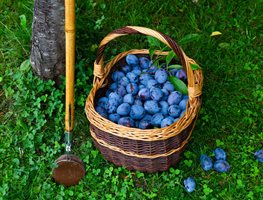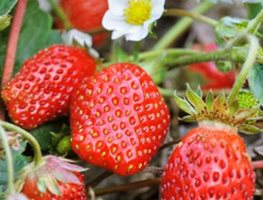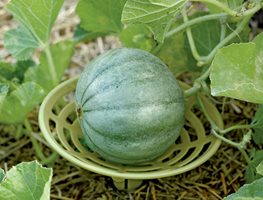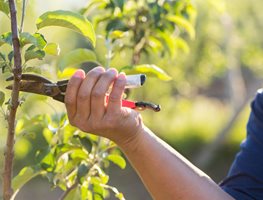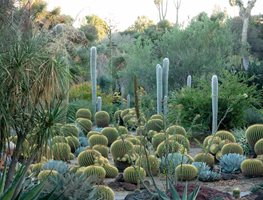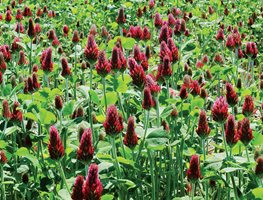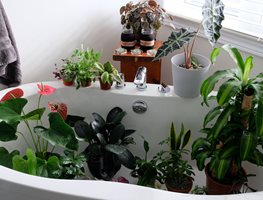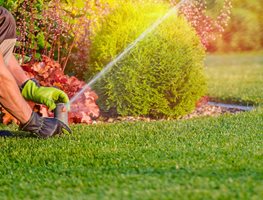10 Gardening Activities for August in Southern California
Summer is marching on. This is often the hottest month of the year, so be sure to protect your skin, wear a hat, and drink plenty of water when you’re outside. When it comes to the garden, August is all about staying on top of your harvest and keeping things tidy, fed, and watered. Here are a few garden reminders, inspiring ideas, and indoor activities for this month.
1. Harvest, Harvest, Harvest
The vegetable garden harvest is often at its peak in August. It’s especially important to pick runner beans, herbs, tomatoes, cucumbers, and squash so that they keep producing. Don’t forget that vegetables and fruits taste best when you harvest them at their proper size (no one likes the taste of oversized squash that were left on the plant too long). To improve taste, it’s also best to harvest early in the morning. Harvesting when it’s cool out and then taking produce indoors helps extend their shelf life. August is also a great time to harvest many varieties of pears, plums, apple, pluots, and peaches. If you don’t have fruit trees but you’re wishing you had some fruit to pick from your garden right about now, start planning so you’ll have some next year! The best time to plant fruit trees is in fall when the weather cools, so now’s the time to decide what you want to plant (this harvest chart can help with your planning).
2. Feed Strawberries
Your strawberries are likely done producing unless you have everbearing strawberries that produce fruit beginning in spring and then intermittently through summer and fall. Either way, it’s important to give your berries proper fertilization this time of year. Use a fertilizer designed specifically for berries such as Espoma Organic Berry-tone. Water well after fertilizing.
3. Give Melons & Pumpkins Support
This month is a good time to lift melons and other developing gourds and pumpkins off the soil to prevent issues such as rot and discoloration as they grow. Some people like to use bowls, but you can buy melon and squash cradles that are specifically designed to help you grow blemish-free produce. These cradles often come in sets and are easy to store. Stop watering melons around one week before you’re ready to pick them. This allows sugars to concentrate in the fruit and also helps prevent the melons from splitting open.
4. Prune & Clean Up Around Fruit Trees
If you notice any dead or diseased branches on your fruit trees, cut them off now. But only remove problematic branches that can cause disease or other issues—you’ll want to hold off on any major pruning until the fall for most fruit trees. Citrus trees, for example, should be pruned at the end of their fruiting season before next year’s flowers begin to bud. Remove fallen fruit and old leaves from below trees to help prevent pest infestations and the spread of disease to healthy trees.
5. Visit Southern California Gardens (in person or from home)
There are many extraordinary gardens, so we created a collection of self-guided day trips with beautiful photos to browse from home, along with insights and information to help you plan your next trip and make the most of your time in each location!
Los Angeles Day Trip: Garden expert and horticultural consultant Nicholas Staddon guides you through the LA Arboretum, which, “really is a gem," he says. Next, the iconic Huntington Library, Art Collections and Botanical Garden (pictured), and the Rancho Santa Ana Botanic Garden, which is a living museum of plants.
San Diego Day Trip: Sunny San Diego has a lot to offer—and outstanding gardens are definitely on the list! Start at the San Diego Botanic Garden; then on to the Botanical Building and Lily Pond at Balboa Park, home to over 2,100 plants; and finally to the San Diego Zoo where there are many succulents and cacti to admire. Local expert Debra Lee Baldwin is your guide.
Don't miss what to do in the garden each month, make sure you're getting our weekly newsletter.
6. Transplant Perennials
This is the month to transplant or divide bearded irises, daylilies, lilies, peonies, and oriental poppies (divide or plant poppies later this month and into the fall). Be sure your new plants have properly amended soil. Use an all-purpose fertilizer such as Yum Yum Mix along with a good compost to prepare your soil. If you want to add to your daylily collection visit Proven Winners or Oakes Daylilies.
7. Grow Cool-Weather Crops or Plant a Cover Crop
By late-August you can begin direct sowing seeds of broccoli, Brussels sprouts, kale, mustard greens, and other fall crops. Cauliflower and cabbage grow better when you start them indoors and transplant them once seedlings have a chance to mature. You can plant crops through late summer and early fall in Southern California. Use Clyde’s Garden Planner to figure out the exact timing for your area. If you’re not planting a fall garden, then consider planting a cover crop such as alfalfa, fava beans, or crimson clover. These plants add nitrogen to the soil as they grow so it’s available to future crops once the cover crops are removed. They also serve to suppress weeds in your empty garden beds. When you’re getting ready to plant your crops come spring, you’ll cut down your cover crops, compost green stems and leaves, and till roots into the soil.
8. Blooming Now
With Southern California being mostly in Zones 8-11, there are many plants blooming through late summer.
With sterile varieties now available, butterfly bush is a great way to invite pollinators into your sunny garden.
An easy-to-grow and beloved succulent is sedum (pictured), and August is a good time to plant as well.
Hardy in zones 9-11, angelonia grows great on hillsides and in containers alike. When the temperatures rise, this snap-dragon lookalike says "bring it on!"
9. Wash, Fertilize & Protect Houseplants
It’s common for scale, spider mites, and thrips to wreak their havoc on houseplants during summer, so this is a good time to give your indoor plants a refresh. Put all of them in the bathtub and give them a good rinse and soak. Spray them with room-temperature water to rinse dust and infestations off foliage. If you don’t have a bathtub, you can also take your plants outside, set them in a shaded area, and gently spray them with a garden hose. Treat severe infestations with insecticidal soap such as Espoma Organics Earth-Tone Insecticidal Soap. Keep infected plants away from healthy plants to avoid the transfer of pest problems. It also helps plant growth to wipe off dust regularly, which allows plant foliage to respirate and absorb all available sunlight. When wiping down plants, adding a diluted amount of neem oil can help protect against pests. Fertilize with indoor plant food or use indoor plant food spikes.
10. Test Watering Systems
This can be the toughest time of year for plants in Southern California because of the heat, so verify that your plants are getting plenty of water. Native plants typically don’t need added water unless there’s been prolonged drought or extreme temperatures. To ensure your plants are getting proper water, test your irrigation systems and watch how water reaches the plants. In some cases, you’ll notice broken sprinklers, clogged drip-irrigation emitters, broken lines, or sprinkler heads spraying the sidewalk instead of the plants. Fix or adjust irrigation systems where appropriate.
If you enjoyed this information, sign up for our weekly newsletter. Each week, you'll get Garden Design's best delivered right to your inbox including design tips, plant picks, great gardens, outdoor living products, and events to enjoy — along with monthly gardening checklists just for your area.
Do you know someone who would enjoy this Southern California Region gardening information? Why not share it with them?
When you purchase products through links on our site, we may receive an affiliate commission. Thank you for your support.
